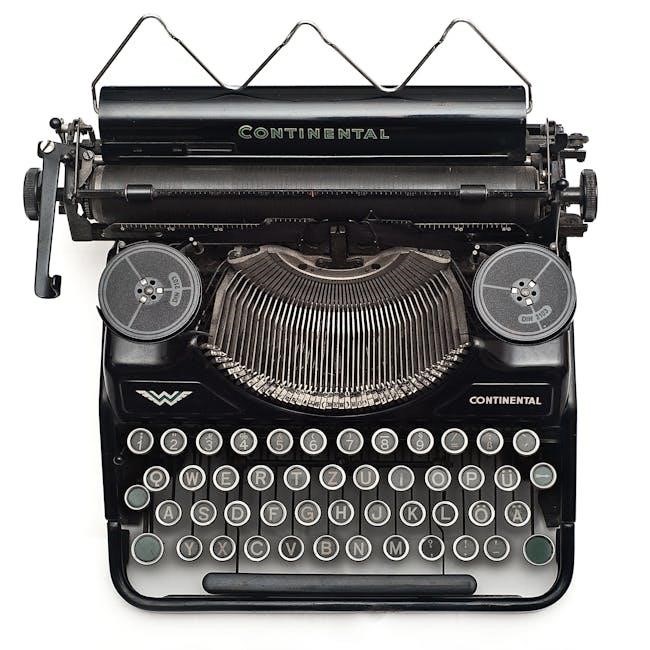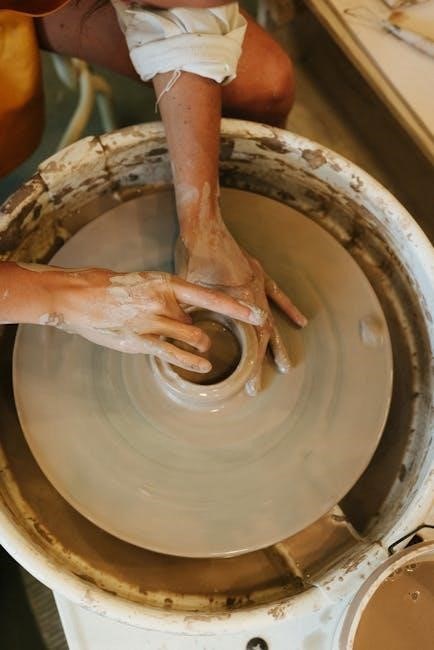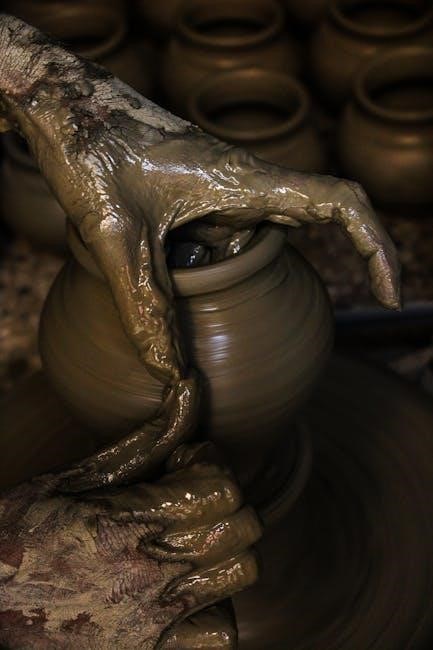Manual Lymphatic Drainage has various applications, but certain conditions are contraindicated, requiring careful consideration of patient suitability for this therapy to ensure safe and effective treatment outcomes always exist․
Definition of Manual Lymphatic Drainage
Manual Lymphatic Drainage (MLD) is a therapeutic technique designed to stimulate the lymphatic system, promoting the movement of lymph and improving the drainage of excess fluid․ This technique is widely used for conditions such as lymphedema, post-surgical recovery, and certain inflammatory disorders․ The lymph vessels reside just under the skin, so not a lot of pressure is needed to perform MLD․ The technique involves a gentle, light touch, and is often described as a skin stretch, where the fluid is moved from one place to another․ MLD is a unique technique that is different from other forms of massage, such as Swedish massage, which is more flowy and gentle, but still engages the tissue․ The Vodder technique is a well-known method of MLD, developed by Dr․ Emil Vodder and his wife, Estrid, in 1936 in Paris․ MLD is a safe and well-tolerated therapy for most individuals, but it is essential to understand its definition and applications to ensure effective treatment outcomes․ The technique has been widely used for many years and has been shown to be beneficial in promoting lymphatic drainage and reducing swelling․

Certain conditions are contraindicated for Manual Lymphatic Drainage therapy always requiring careful consideration of patient suitability for treatment to ensure safety and effectiveness always exist naturally everyday․
Metastatic or Systemic Malignant Conditions
Manual Lymphatic Drainage is contraindicated in cases of metastatic or systemic malignant conditions, as it may exacerbate the spread of cancer cells throughout the body․ This is a critical consideration for therapists, as the technique can stimulate the lymphatic system and potentially dislodge cancer cells․ The lymphatic system plays a key role in the spread of cancer, and any manipulation of this system can have unintended consequences․ Therefore, it is essential to exclude any metastatic or systemic malignant conditions before administering Manual Lymphatic Drainage․ This requires careful evaluation of the patient’s medical history and current health status․ By understanding the potential risks and contraindications, therapists can provide safe and effective treatment for their patients․ The exclusion of metastatic or systemic malignant conditions is a crucial aspect of ensuring the safe application of Manual Lymphatic Drainage․ This consideration is vital to preventing any adverse effects and promoting the well-being of patients․
Relative Contraindications to Massage and Manual Lymphatic Drainage
Relative contraindications to Massage and Manual Lymphatic Drainage require careful consideration, as they may impact the safety and effectiveness of the treatment․ These conditions include edema and lymphedema, which can be both a benefit and a risk for Manual Lymphatic Drainage․ The technique can help alleviate symptoms, but it can also exacerbate the condition if not performed correctly․ Other relative contraindications include acute inflammation, active infections, and certain cardiovascular conditions․ In these cases, the benefits of Manual Lymphatic Drainage must be weighed against the potential risks, and the therapist must use caution and modify the technique accordingly․ By understanding the relative contraindications, therapists can provide personalized and safe treatment for their patients․ This requires careful evaluation and communication with the patient to determine the best course of treatment․ The goal is to minimize risks and maximize benefits, ensuring a positive outcome for the patient․ Effective communication and careful consideration are essential in these situations․

Precautions for Manual Lymphatic Drainage
Therapists should exercise caution when performing Manual Lymphatic Drainage, considering patient conditions and medications always to ensure safe treatment outcomes and minimize potential risks effectively every time․
Acute Infections
Manual Lymphatic Drainage should not be performed during the acute stage of infection, as this can exacerbate the condition and lead to further complications․ The therapist should exercise caution and consider the patient’s overall health before proceeding with treatment․ In cases of acute infection, it is essential to prioritize the patient’s health and safety above all else․ The lymphatic system plays a crucial role in immune function, and Manual Lymphatic Drainage can potentially spread the infection, making it worse․ Therefore, it is crucial to avoid performing Manual Lymphatic Drainage on patients with acute infections, and instead, focus on promoting rest, hydration, and other supportive measures to help the body recover․ By taking a cautious approach, therapists can minimize the risk of complications and ensure the best possible outcomes for their patients․ This requires careful assessment and consideration of the patient’s condition, as well as close collaboration with other healthcare professionals․
Technique and Pressure
The technique used in Manual Lymphatic Drainage is gentle and subtle, requiring a light touch to stimulate the lymphatic vessels․ The pressure applied is minimal, as the lymph vessels are located just beneath the skin’s surface․ A certified therapist trained in the Vodder technique will use a specific sequence of strokes, including a pressure phase and a relaxation phase, to create a pumping motion that aids in the movement of lymph fluid․ The skin is stretched, rather than the underlying tissue, to facilitate the drainage of excess fluid․ This technique is distinct from other forms of massage, such as Swedish massage, which employs more flowing and gentle strokes․ The gentle pressure and precise technique used in Manual Lymphatic Drainage make it an effective and safe treatment for promoting lymphatic function and reducing swelling․ By using the correct technique and pressure, therapists can help patients achieve optimal results and minimize the risk of adverse effects․ Proper training and certification are essential to master this technique․

Important Considerations for Manual Lymphatic Drainage
Therapists must consider individual patient needs and medical history carefully always․
Benefits and Risks

Manual Lymphatic Drainage (MLD) is a therapeutic technique that offers numerous benefits, including improved lymphatic circulation, reduced swelling, and enhanced overall well-being․ The benefits of MLD are well-documented, and it is widely used to treat conditions such as lymphedema, post-surgical recovery, and certain inflammatory disorders․ However, as with any therapy, there are potential risks associated with MLD, including the possibility of exacerbating underlying medical conditions or interacting with other treatments․ It is essential to carefully weigh the benefits and risks of MLD and to consult with a qualified healthcare professional before undergoing treatment․ By understanding the potential benefits and risks of MLD, individuals can make informed decisions about their care and ensure the best possible outcomes․ The therapy is generally considered safe and well-tolerated, but caution should be exercised in certain situations, and individual patient needs and medical history should be carefully considered․ Effective communication between patient and therapist is crucial․
Training and Certification
Manual Lymphatic Drainage (MLD) therapists undergo specialized training to master the technique, which involves gentle, light strokes to stimulate the lymphatic system․ The training programs typically include both theoretical and practical components, covering topics such as anatomy, physiology, and pathology of the lymphatic system․ Certification in MLD is essential to ensure that therapists have the necessary knowledge and skills to provide safe and effective treatment․ Certified therapists must demonstrate competence in the technique and adhere to established standards of practice․ The certification process typically involves a written examination, practical assessment, and continuing education requirements to maintain certification․ By choosing a certified MLD therapist, individuals can trust that they are receiving treatment from a qualified professional who has the necessary training and expertise․ This is crucial in ensuring the best possible outcomes and minimizing the risk of adverse effects․ Therapists must stay updated on the latest techniques and research․


